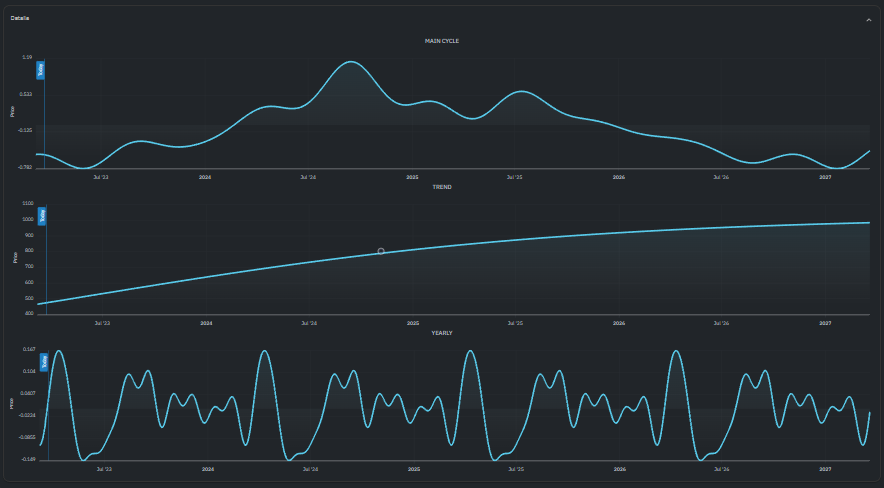20 Recommended Facts For Choosing AI Stock Predicting Websites
20 Recommended Facts For Choosing AI Stock Predicting Websites
Blog Article
Top 10 Tips To Evaluate The Strategy Customization Of Ai Stock Predicting/Analyzing Trading Platforms
AI platform for stock-predicting and analyzing stocks offer a number of customization options that let users customize their platform to suit their own trading goals in terms of risk-taking, as well as market condition. A platform that has a range of customization features will enhance your trading. Here are the 10 best strategies for evaluating the customizable options available on these platforms.
1. Evaluate Pre-Built Strategy Templates
Many templates - Look to see if there's pre-built strategies that cater for different trading styles.
Easy to use: Check the ease of use required to apply and modify these templates to meet your needs.
Performance history. Verify whether the platform includes historical performance information for prebuilt strategies.
2. Assessment Custom Strategy
Drag-and-drop tools: Find platforms that have intuitive drag-and drop interfaces to design custom strategies.
Look for options to code. For advanced users, you may need to determine if the platform allows custom programming.
Flexibility - Make sure the platform you select permits you to establish rules for entry and exit, as well as parameters to manage risk, as well as other important elements of your strategic plan.
3. Check for Backtesting Capabilities
Historical data: Determine whether there is enough data to backtest your strategies.
Customizable Parameters: It is important to be able to adjust parameters, such as timeframes and indicators, during backtesting.
Performance metrics: Make sure the platform has detailed metrics of performance (e.g. Win rate Sharpe Ratio) when backtesting strategies.
4. Evaluate Real-Time Strategy Testing
Paper trading: Make sure that the platform supports simulation and paper trading modes for testing strategies in real time without placing your money at risk.
Live testing: See if you are able to test your strategies on real markets using small amounts capital.
Real-time adjustment: Find out whether it is feasible to adjust strategies according to market conditions.
5. Assess Integration with Technological Indicators
Indicator library - Check if a platform provides an extensive library of indicators that are technical, including moving averages (e.g. RSI), MACD, or RSI.
Custom indicators: Ensure you are able to import or design custom indicators to match your plans.
Find out if you can combine several indicators to make more complex strategies.
6. Check for Risk Management Tools
Stop-loss/take-profit: Ensure the platform allows you to set stop-loss and take-profit levels within your strategies.
Position sizing - Examine to see if you have any rules you could follow (e.g. the fixed amount or an amount of your portfolio) for managing risk.
Risk-reward: Make sure your platform allows you to define risk-rewards for each trade or strategy.
7. Evaluate Multi-Asset Strategy Support
Asset classes: Ensure the platform supports strategies across different asset classes (e.g. ETFs, stocks, options and forex).
Cross-assets strategies: Find out whether you're capable of designing strategies that combine various asset classes.
Market coverage: Check whether the platform provides the services you require (e.g. US, international or cryptocurrencies).
8. Assess the automation, Execution and Execution
Automated trading: Ensure the platform supports automated execution of strategies based upon defined rules.
Order types: Verify that the platform is able to execute different order types including market, limit and stop.
Latency: Determine that the platform is able to perform trades with minimal latency particularly for strategies with high frequency.
9. Look for strategies optimization tools
Parameter optimization. Check that your platform permits you to optimize the parameters of your plan (e.g. Grid search, Genetic algorithms).
Machine learning: Ensure the platform has machine learning integrated to refine and improve strategies.
Scenario evaluation: Determine if your platform is able of testing various strategies to deal with different market conditions, including bearish, bullish, or volatile.
Review User Feedback and Community Support
User reviews: Review the feedback of users to determine the platform's capacity to tailor strategies.
Community forums: See if the platform has an active community where users are able to discuss and discuss customized strategies.
Support sources. Make sure there are tutorials or webinars to aid you in the creation and optimization of your strategies.
Bonus Tips
Trial period: Try the features of the platform to customize your experience at no cost by registering for a trial or demo.
Scalability: Ensure the platform is able to handle more complex strategies as your trading grows.
Support for customers Find out if support for your inquiries or concerns relating to the strategy.
These tips will help you evaluate the customization options of AI trading platforms which can predict or analyze the performance of stocks. This way you'll be able select one that is compatible with your goals in trading, and lets you improve and implement your strategies. A platform that offers flexible options for customization can allow you to adjust to changing market conditions and enhance your trading performance. Check out the top rated this hyperlink on best copyright prediction site for website advice including ai stock trading, best ai copyright to buy, best free copyright trading bot, best ai copyright, invest in ai stocks, trading with ai, best ai trading platform, ai chart analysis, ai trade, trading ai bot and more.
Top 10 Ways To Evaluate The Transparency Of Ai Stock Trading Platforms
Transparency is a factor to consider when looking at AI platforms for prediction and trading in stocks. Transparency allows users to be confident in the operation of the platform, comprehend decisions, and verify accuracy of predictions. Here are the top 10 ways to gauge the level of transparency in these platforms.
1. AI Models: A Simple Explanation
Tip: Make sure the platform is clear about the AI models and algorithms that are employed to create predictions.
The reason: Understanding the basic technology allows users to assess its reliability and limitations.
2. Disclosure of Source Data
Tip: Check if the platform discloses the data sources it uses (e.g. historic stock information or social media).
The platform uses reliable and extensive data, If you are familiar with the sources.
3. Performance Metrics and Backtesting Results
Tips - Search for transparent reports on the performance metrics like the accuracy rate, ROI, and backtesting.
This will give users to compare the performance of their previous platforms with those on the current platform.
4. Real-time notifications, updates, and updates
Tip. Check whether the platform is able to provide live notifications or updates on system changes and trades in addition to predictions.
Why? Real-time transparency allows users to be aware of the critical actions.
5. Limitations and Open Communication
Tip Check that the platform discusses its risks and limitations regarding trading strategies and forecasts.
The reason is that acknowledging limitations helps build trust, and allows users to make informed decisions.
6. User Access to Raw Data
Tip: Determine whether the AI model is able to access raw data or intermediate results, or both.
Why: Users can perform their own analysis using the raw data as well as confirm their findings.
7. Transparency in the charges and fees
Make sure the platform clearly explains every cost for subscriptions, and any other extra costs.
Transparent pricing reduces the chance of unexpected expenses, and fosters confidence.
8. Regularly reporting and performing audits
Examine whether there are any regular reports from the platform, or if an external auditor is able to verify its operational and financial their performance.
Independent verification increases credibility and accountability
9. Explainability of predictions
Tips: Find out on how the platform makes specific predictions or suggestions (e.g. the importance of features, decision trees).
Why? Explainability lets users to learn the reasoning of AI-driven decisions.
10. User feedback and support channels
TIP: Find out if the platform offers open channels to get feedback from its users and provides assistance. It is also important to determine whether it responds to user complaints in a clear and transparent manner.
Why is that responsive communication demonstrates the commitment to the transparency of users and their satisfaction.
Bonus Tip - Regulatory Compliance
Make sure the platform adheres and is transparent regarding its compliance with the financial regulations. This will add another layer of credibility for the platform.
If you take the time to carefully examine these factors you can evaluate whether an AI-based stock forecasting and trading system functions in a transparent way. This allows you to make informed decisions and build confidence in its capabilities. Check out the best ai trading for more tips including ai day trading, ai stocks, best free copyright trading bot, investing ai, best stocks to invest in, best ai trading app, best stock analysis website, free ai trading bot, best stock analysis app, ai trading app and more.